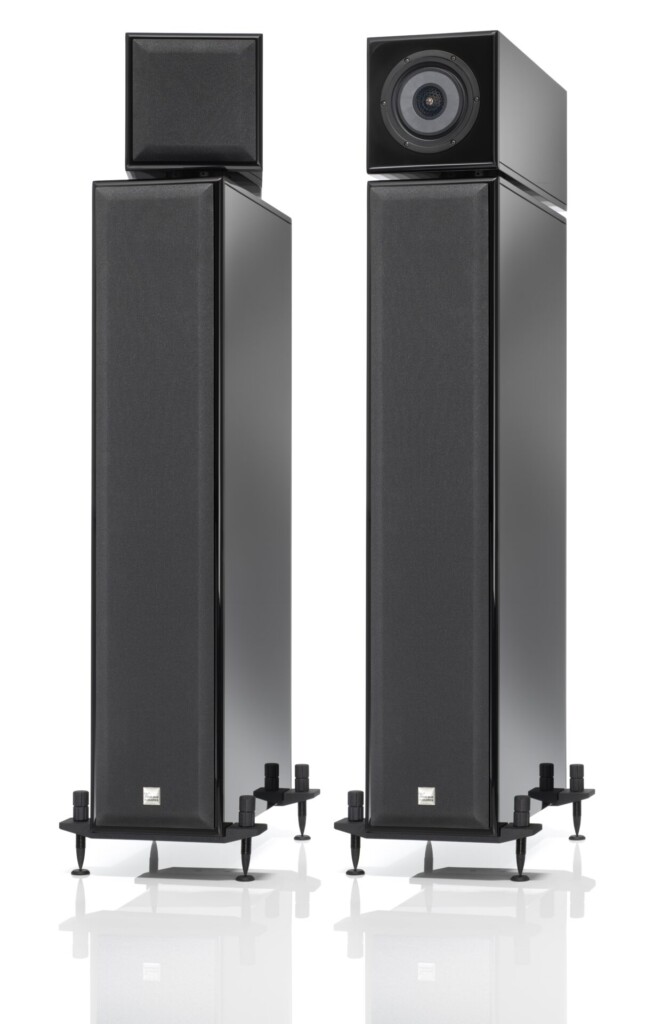Interestingly, despite obvious similarities in the character of the I1 and A1.5, swapping between the two CH products demanded a significant change in speaker height, approximately two complete turns on each spike for the I1. In terms of adjusting the bass balance, that’s a significant difference, reflecting both the grip and control available from the two amplifiers, but also the remarkable potential embodied in the Liszt’s bottom end – just how carefully it needs to be handled and the degree to which it can accommodate partnering components. Providing that the power is there, the Liszt II isn’t picky when it comes to playmates. Getting them to play nice will take some care and attention and the more TLC you give them, the nicer they’ll be – and when they’re good, they’re very, very good indeed.
Looked at on paper, the Liszt Reference isn’t exactly my kind of speaker. I value rhythmic articulation, presence and immediacy in my loudspeakers, qualities that generally go hand-in-hand with higher sensitivity designs, whose speed, attack and dynamic range feed into my listening biases. The Liszt is the polar opposite, a wide bandwidth design that trades efficiency for bass-extension. That allows the slim cabinet and three 7” drivers to reproduce a pretty convincing 28Hz – at the expense of a 4Ω load and 91dB sensitivity. Yet listening to the Liszt you’d be hard pressed to tag those numbers. The speaker sounds way more present, substantial and immediate than you’d expect – which helps explain my long-term affair with it. But what’s really interesting is how it achieves that trick…
Let’s take the disparate qualities I’ve referred to (presence, immediacy and musical/rhythmic articulation) and combine them under a single umbrella, an umbrella we’ll call ‘musical impact’ for the sake of argument. We can express impact as mass times velocity. All those sensitive speaker systems I enjoy are trading on their speed to deliver that impact. But there are two factors in the equation. The Listz certainly ain’t slow, but it combines its limited speed of response (at least relative to really efficient systems) with an unusually accurate feel for instrumental mass. That accuracy is important. Too much mass in the wrong place or at the wrong time and you end up with an embarrassing mess. But the Liszt combines a carefully engineered, phase-coherent crossover with the natural tonality and excellent out-of-band behaviour of its clever drivers to deliver a natural perspective that gets the right amount of energy in the right place at the right time. Meanwhile, the speaker’s control of the whole-note envelope (rather than leaning on the leading edge) and its harmonic resolution adds body and complexity to those notes, concentrating their energy in space and time. Take that organized, naturally proportion and concentrated energy and give it some boot and there- you have it, a convincing sense of body, presence and immediacy, built on unusually extended bandwidth and bought at the expense of a design that if not exactly power hungry, certainly leans that way.
Hidden figures…
Vienna Acoustics speakers have always majored on natural presence and tonality, seamless musical and spatial coherence. But the Liszt Reference takes those well-established qualities, adds in a dose of the BSG’s musical ebullience and reinvigorates the recorded performance. Playing music through these speakers invests it with a sense of substance and vitality that, combined with their ability to capture the character, the tonal, textural and harmonic identity of voices and instruments, makes their big name price peers sound two-dimensional and gutless, insipid and lacking any sense of musical impetus. Play the allegro from Vivaldi’s Cello Concerto in E Minor (from the Kobekina/Venice disc) and you’ll experience exactly what I mean. It’s not just the articulation in the playing, it’s the intent and purpose. Both orchestra and soloist attack the score with such vigour that there’s a serious sense of effort transmuted into musical energy. Sat front and centre, Kobekina’s bowing is so vivid that you can almost picture it, her phrasing and the orchestral accompaniment punctuated emphatically and in bold. That’s exactly the sort of vibrant, immediate quality I normally associate with more efficient speakers, but in this case you can clearly appreciate that it’s a function of not just the textural and harmonic resolution of the speakers, but their sense of organisation and focus, that ability to concentrate musical energy exactly where and when it should be.



